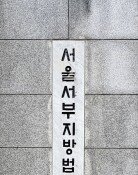Snow, Wine, and Skiing the Snow Country Is Calling
Snow, Wine, and Skiing the Snow Country Is Calling
Posted November. 29, 2004 23:06,

The central focus of interest of foreigners who visit Japan usually falls onto Tokyo, Osaka, and Kyoto. It seems natural for the cities to draw attention since Tokyo and Osaka are already well known megacities, and Kyoto is the spring source of the traditional Japanese culture which the Japanese themselves have special affection for. However, if you want to see beautiful Japanese sceneries or understand the true way that Japanese lead their lives, you have to look into the smaller, local cities.
The Echigo and Uetsu areas, sided by the East sea on the south of the Tohoku region and the mountains, are special. The lives of people living here with the abundance of nature and their roots in nature give modern people a sense of home for their mind. In the Echigo and Uetsu areas, Niigata prefecture in the south is especially very accessible. It is only a two-hour train ride away by Japanese Shinkansen from Tokyo, and a two-hour direct flight from Incheon is offered five times a week.
Hometown of The Snow Country
After exiting the long tunnel of the border, there was the snow country. The bottom of the night turned white.
This is the first part of The Snow Country, the first Japanese novel to win the Nobel Literature Prize. Writer Kawabata Yasunari, who liked to stay in ryokan for long term stays and write, stayed in a small onsen town of Yuzawa, now a popular ski resort to write this novel. To go to Yuzawa, a steep mountainous area, one has to go through a huge tunnel through the mountains on the border of two prefectures of Gunma and Niigata on the Uetsu train from Tokyo. The Shimiz tunnel extends for 9.7 km, and that is the one that appears in the novel as well.
During the last months earthquake, the roykan Takahan, where Kawabata wrote the novel, also received some damage according to the news. I asked about the roykan since I was there last January for a report and was worried about its damage, but it was a great relief to hear that they suffered only a few broken cups and a few cracks on the wall.
The 70-year-old wooden building has changed its face into a concrete one, but it still remains at its original place. The room in which Kawabata wrote is still kept as it was.
-Directions: Get on Joetsu Shinkansen from Tokyo and get off at Echigo Yuzawa Station. The ryokan costs 12,000 ~ 15,000 yen per night with two meals included.
Hometown of Japanese Wine
Looking at the map of Niigata, one is surprised by seeing how similar its shape is to Honshu, the main island. Only its northwest side meets the East Sea, and all the other sides are surrounded by mountains, the Echigo mountains on the northeast, Mikuni and Joshinetsu mountains and Japan Alps on the southeast.
The snow of Niigata is the collaborative work of the sea and the mountains. The humid air from the sea meets the mountains and creates a large amount of snow. This snow melts and forms a river that flows into the sea. Niigata rice wine and Niigata Koshihikari rice, picked as Japans best, are born out this water. Koshihikari rice comes from the Niigata and Takata plains. Kubota, Koshibokanbai, and other famed rice wines are made of these rice grains and the underground water from melted snow. Within the prefecture, there are 99 wine makers.
-Sakenojin Traditional Wine Festival: Contact for more information Niigata Office in Korea Homepage (www.niigata.or.kr). Tel. 02-773-3161
Hometown of Yuki Matsuri
When hearing the word Yuki Matsuri (Snow Festival), people think of Sapporo, Hokkaido. However, Tokamachi-shi is also the hometown of the festival since it was started in 1950, the same as Sapporo. The locals say that they are the original one, if they have to compete, since the festival started one week ahead of their counterpart.
Tokamachi is a small farming village of a 30-minute drive from Echigo Yuzawa where the Takahan ryokan is located. When I visited the village in time for the February festival, the town was crowded with Japanese tourists. The festival here was different from that of Sapporo. While Sapporos boasts its magnitude with huge snow statues covering hundreds of meters at Odori Park and Makomanai military drill ground of the Japanese Defense Forces, Tokamachis is offered in 20 small locations within the town such as in the local high school playground and on the mountainside.
Hometown of Skiing
The day I visited the Yuzawa onsen, I was taken aback at the fact that the valleys that I was driving through looked exactly like the Arlberg valley in Tyrol in Austrias Alps. The surrounding scenery and the geographical setting was exactly the same. Arlberg is a one-hour train ride away from Tyrols province capital of Innsbruck. It is an area with deep valleys with world-famous ski resort towns like St. Anton, St. Christoph, and Lech. St. Anton was the birthplace of ski.
In 1911, a Austrian solider brought his skis with him when he came to Japan, and that was how the sport of skiing was introduced to Japan in Yuzawas mountainside. The reason he chose here for skiing was absolutely self-revealing: a geographical similarity to home and similarities in sceneries, and much snow. His name was Theodore von Lerch, an Australian Military Attache, and his statue is watching over the mountains now.
Niigata has 85 ski resorts. The best one is Naebada. The northeast slope on the 1,789m-high Takenoko mountain has 38 lifts and 28 ski trails. Skiers can enjoy skiing from late October with snowmakers near the mountaintop. It also holds nighttime skiing. Contact Nagata Prefecture Office in Korea Homepage for more information.
Seung-Ha Cho summer@donga.com







